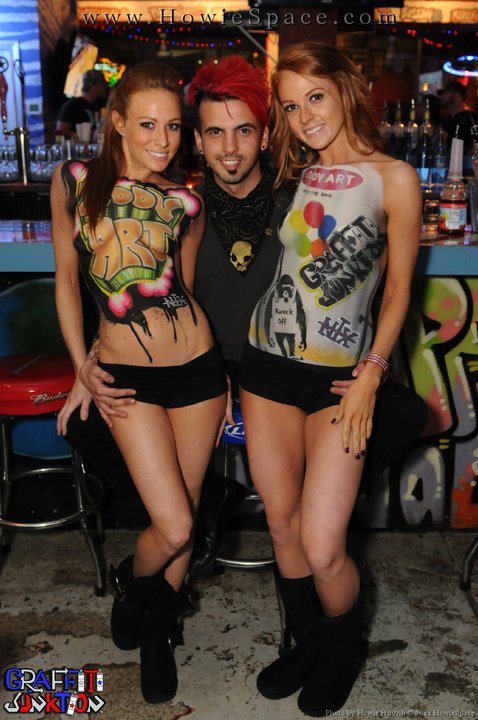It took Davinci 4 years to complete the Mona Lisa, which is about 30 inches by 15 inches. An average body painting, which is more than double in size of the Mona Lisa, usually takes 3-5 hours. Body Painting is still relatively new in the US, and knowing what to charge is still a very grey area for most painters. I get a lot of calls about what to charge, what you can expect to charge, and what the artists is supposed to include in their fee.
In my professional opinion, body painting has yet to become a profitable business unless you charge a nominal fee, or you have an endless supply of free paint. I have a very dear friend who is a professional body painter in Costa Rica, and an extraordinary businessman.
Rodrigo Piedra has mastered the art of booking body painting, and he has learned how to price his work and seek out clientele that can afford it. His fee is high, his work is quality, and he doesn’t compromise on the price. When he plans a body painting he includes the design fees, costs of materials, pre and post production, his team, and professional results. Because his fees are higher than average, he does less volume than some artists body painting at nightclubs and festivals. His approach to body painting is realistic and should be considered if you want to enter the body painting industry.

Cost Vs. Time:
It takes about 3 oz to cover a full body with airbrush make up and 3 oz of paint ranges from $15-$35 depending on the brand. If you add nipple and bottom covers, adhesive, gems, other embellishments, and time to paint the actual design you could easily spend over $100 in just materials. If it takes you 3 -4 hours to paint the model, then you would need to charge over $500 to just cover your materials and time. Not many companies or agents have the budget to pay over $500 per model.
There are other ways to offer affordable body painting. Our great friend Nix Herrera, who was just recently on the Syfy channel series Face Off, is an amazing body painter and is regularly booked at nightclubs, resorts, and private functions. He is comfortable with his designs, incorporates his airbrush for faster base work, and in many cases does not cover the entire body. This speeds up his work, and allows his the time to be more detailed on other areas. Nix has also built up a closet of paint that he can expense over several jobs. If you have to purchase specific paint per job, this is where the costly part comes into consideration.
The best way to start gauging your body painting earning potential is to make a list of designs you are comfortable with offering, how long it takes you to create that design, and doing an inventory on your face and body art supplies. Then you can lay out a plan of what you are selling and the cost associated. Otherwise you will be spinning your wheels and stressing over spilled paint and empty pockets!
Take classes from the professionals themselves! Rodrigo Piedra and Nix Herrera are on Face and Body Art Television! Visit Rodrigo’s profile page or Nix’s profile page and learn body art from the professionals!
